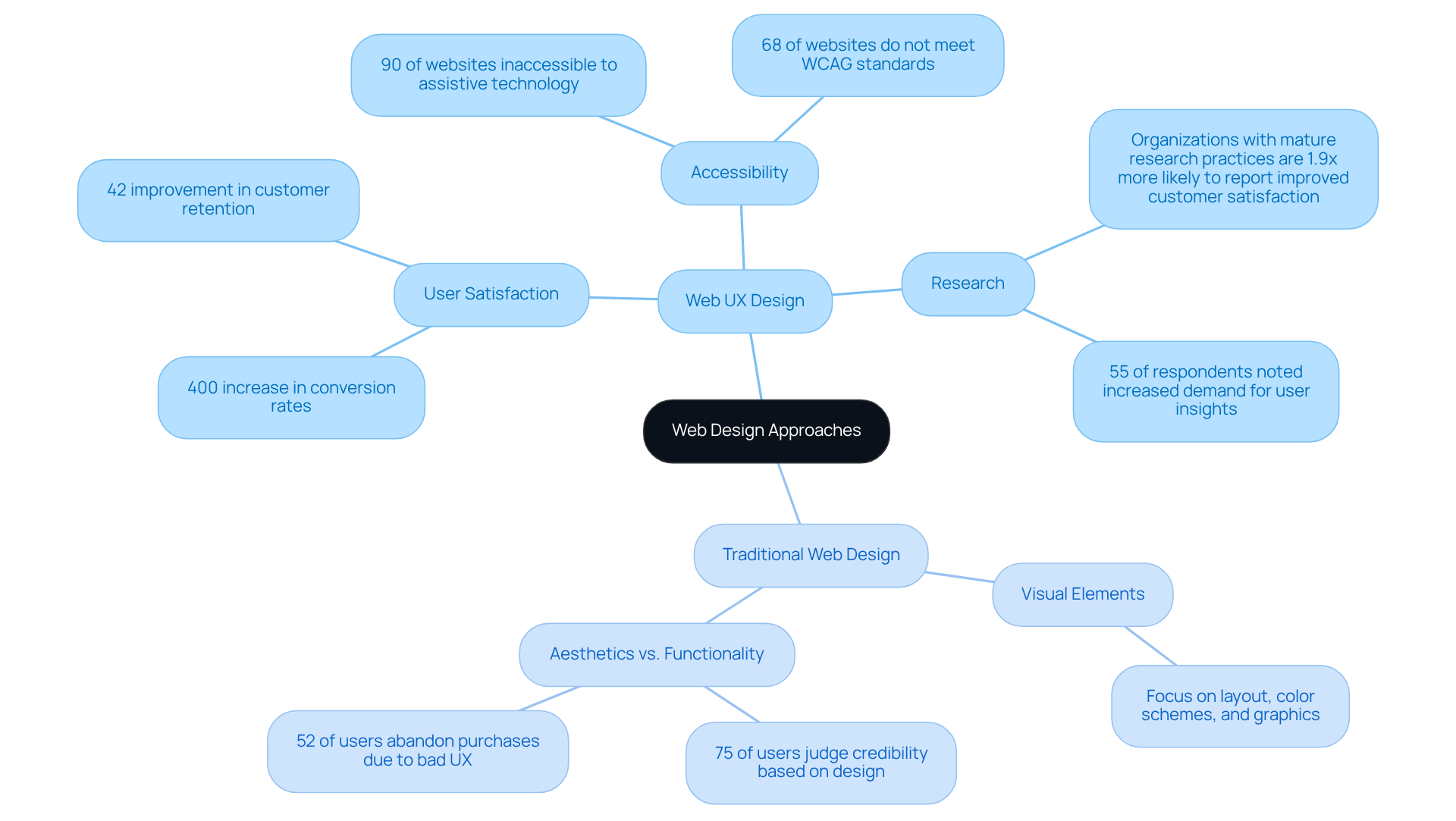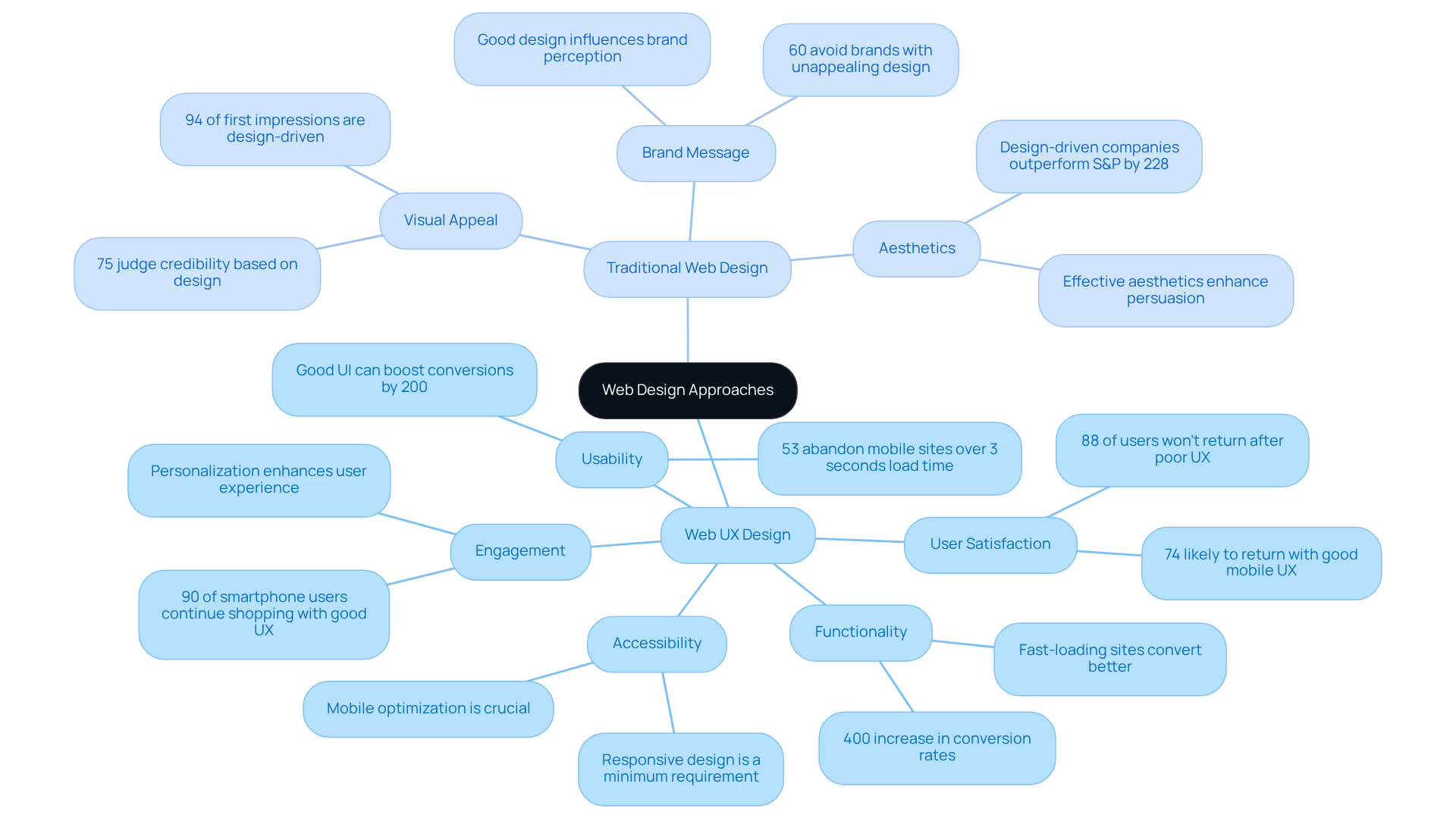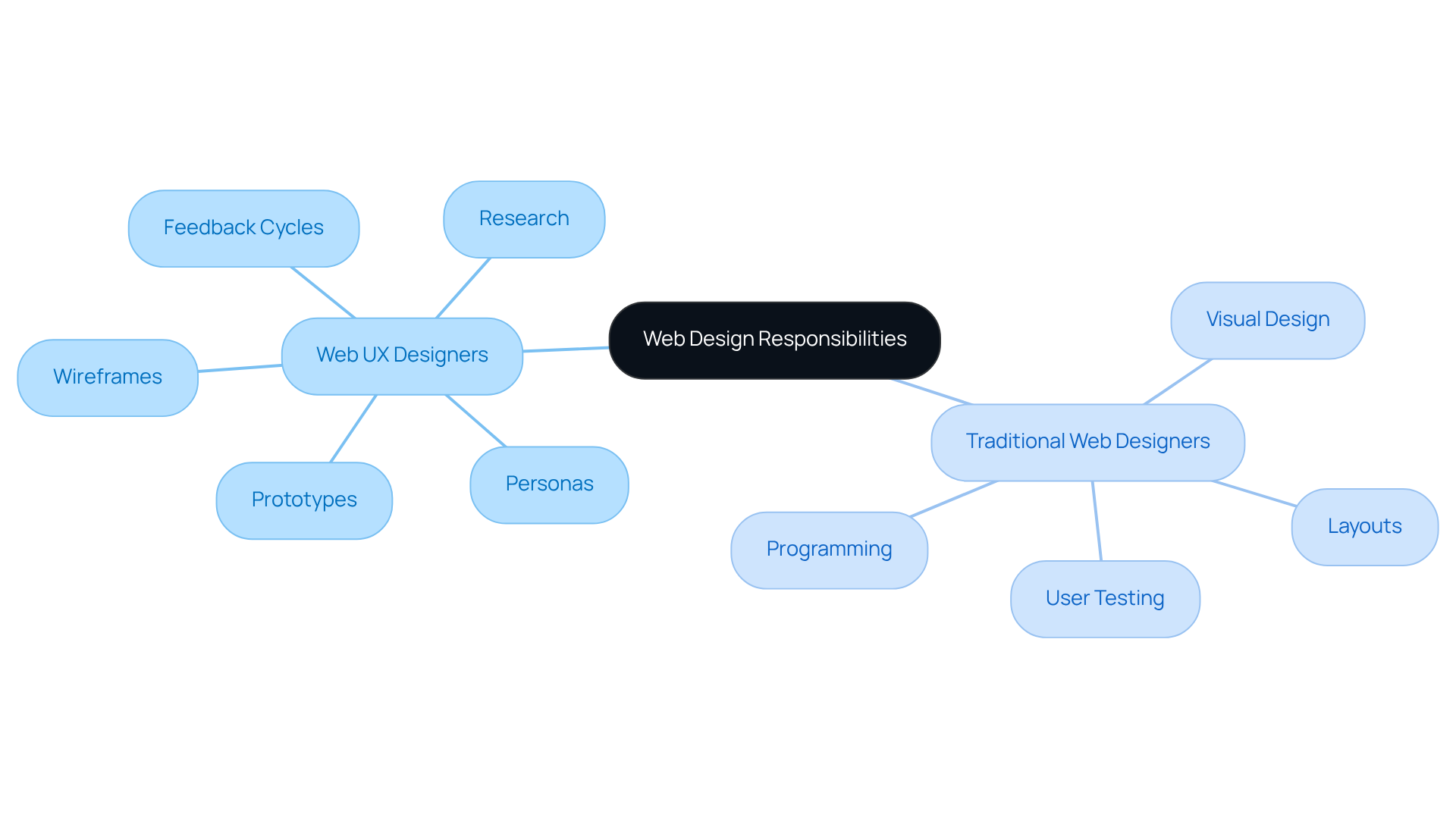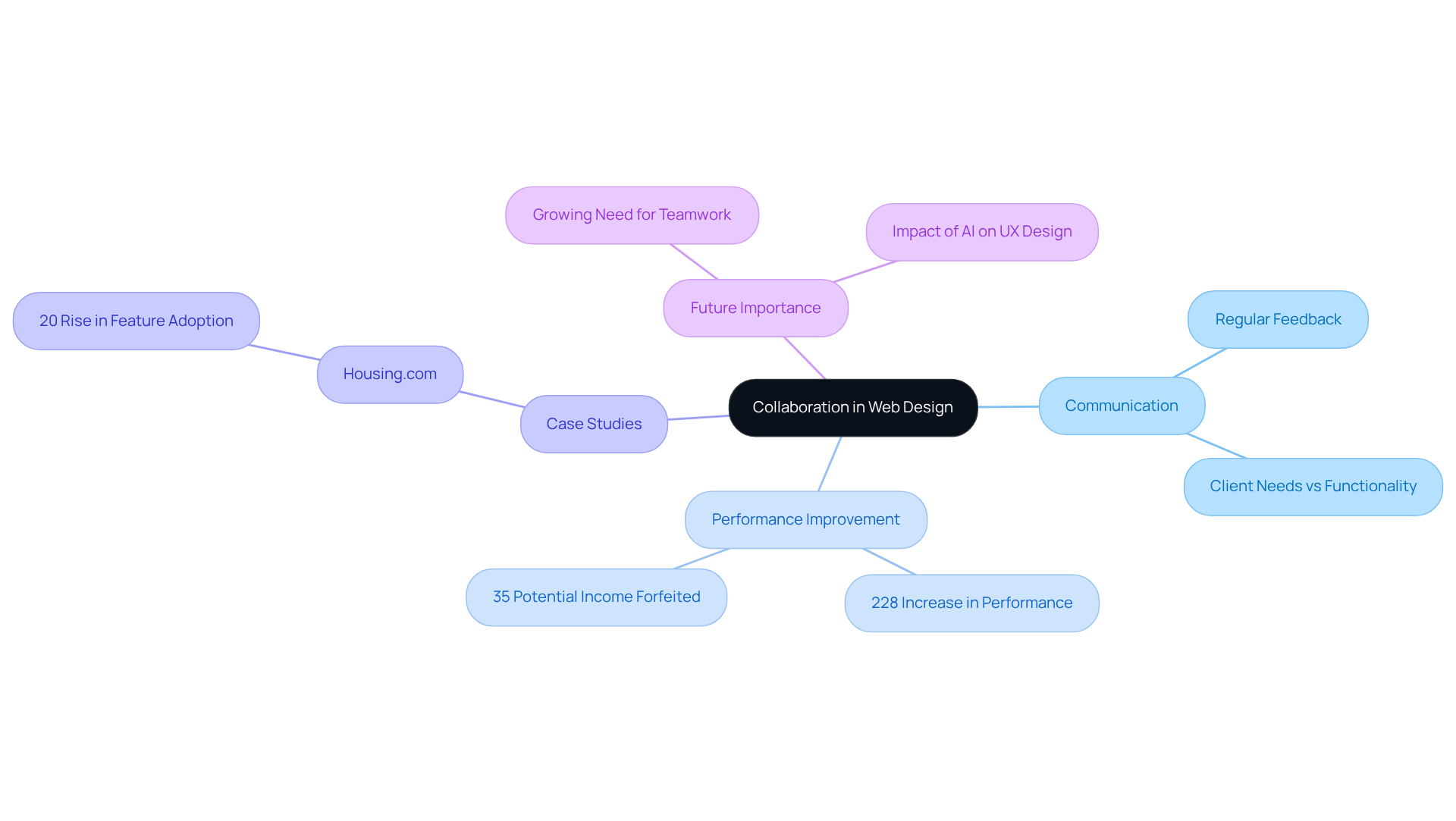Overview
Web UX design presents a challenge for many tech startup founders. Traditional design often prioritizes visual appeal, leaving user satisfaction and usability in the background. This oversight can lead to frustration for users, ultimately impacting conversion rates and customer loyalty. Imagine pouring time and resources into a beautiful website, only to find that users struggle to navigate it. This is a common pain point that many experience.
However, there is a solution. By focusing on user-centered design, startups can create experiences that resonate deeply with their audience. This approach not only enhances usability but also fosters a sense of trust and satisfaction among users. When you prioritize the needs of your users, you pave the way for higher conversion rates and improved customer retention. It's about nurturing relationships and understanding what your audience truly values in their digital experience.
At RNO1, we understand the importance of this shift. We encourage you to reflect on your own design choices and consider how they align with user needs. By adopting a user-centered approach, you can transform your digital presence into one that not only looks good but also feels good to use. Together, let’s create a web experience that speaks to the heart of your users.
Introduction
In today's ever-changing digital landscape, many businesses find themselves grappling with a significant challenge: the choice between web UX design and traditional web design. This decision is not just about aesthetics; it touches on the very heart of user satisfaction, functionality, and accessibility. As you navigate this complex terrain, it’s essential to understand how these design approaches can impact your online presence and ultimately, your success.
The struggle is real—companies often feel torn between creating visually appealing websites that reflect their brand and ensuring that users have a seamless experience. This dilemma can lead to frustration, especially when the goal is to foster engagement and drive conversion rates. It raises a crucial question: which design approach truly yields the best results?
By recognizing the key differences between web UX design and traditional design, you can make informed choices that not only enhance user experience but also cultivate brand loyalty. Remember, the user experience is not just a checkbox; it’s a vital component of your business strategy that can lead to lasting success. At RNO1, we understand these dynamics and are here to support you in prioritizing user experience, ultimately guiding you toward a more engaged audience and a thriving business.
Define Web UX Design and Traditional Web Design
Web UX design addresses a significant challenge by focusing on enhancing satisfaction through improved usability, accessibility, and the overall enjoyment of interactions between individuals and products. This approach is rooted in understanding the needs and behaviors of users through thorough research and testing, leading to designs that prioritize experience. In contrast, Traditional Web Design often focuses primarily on visual elements—layout, color schemes, and graphics—frequently placing aesthetics above functionality. While both methodologies aim to create effective websites, their approaches and objectives diverge significantly. UX creation embraces a holistic, user-centric perspective, while traditional methods tend to emphasize visual appeal and branding.
Consider the impact of effective web UX design on client satisfaction. Companies that invest in enhancing their UX can witness conversion rates soar by up to 400%. Furthermore, 94% of consumers highlight straightforward navigation as the most crucial aspect of online platforms, underscoring the importance of a user-centered approach. At RNO1, our collaborations with innovative firms like Figure reflect our commitment to crafting human-focused digital interactions that transform branding and audience engagement.
As we approach 2025, we see conventional web design trends evolving, with a growing emphasis on incorporating end-user principles. Experts in the field assert that a well-crafted interface can boost conversion rates by up to 200%, reinforcing the idea that customer satisfaction is paramount. Alarmingly, 88% of individuals are less likely to revisit a website after a negative experience, illustrating the direct connection between usability and brand loyalty.
In closing, while traditional web creation has its merits, the shift towards web UX design signifies a deeper understanding of the importance of customer satisfaction and usability in fostering effective digital interactions. It's crucial to acknowledge that 90% of websites remain inaccessible to individuals relying on assistive technology, highlighting the urgent need for accessibility in web UX design, which is a vital component of satisfaction. Therefore, focusing on client interaction (UX) is not just beneficial; it is essential for your firm's success.

Compare Goals of Web UX Design and Traditional Web Design
In the realm of web UX design, the primary aim is to cultivate a seamless and enjoyable experience that not only meets user needs but also aligns with broader business objectives. This encompasses enhancing usability, ensuring accessibility, and fostering engagement among individuals. Conversely, traditional web design tends to prioritize creating visually appealing websites that effectively communicate a brand's message and identity. While both approaches strive to attract and retain users, web UX design places a strong emphasis on user satisfaction and functionality, whereas traditional methods focus more on aesthetics and brand representation. This fundamental difference in objectives leads to distinct processes and outcomes.
User interaction statistics reveal the critical importance of web UX design; for instance, 83% of consumers believe that a smooth interaction across all devices is essential. A well-implemented web UX design strategy can increase conversion rates by as much as 400%. Additionally, branding specialists emphasize that effective aesthetics go beyond mere visual attraction; they also encompass persuasion and sales enhancement. As Frosina Stojchevska insightfully notes, "User interaction has become a significant difference-maker in retaining customers, increasing revenue, and fostering brand loyalty."
RNO1 stands as a testament to the transformative power of user experience through its partnerships with various brands. Their collaboration with Figure has significantly enhanced the contemporary HR platform by prioritizing human-focused digital interactions, reimagining compensation management with thoughtful design. Furthermore, partnerships with companies like Microsoft and Spring Labs illustrate RNO1's extensive impact in the UX arena. For example, Staples experienced an impressive 500% increase in online revenue following a UX-centered site redesign, showcasing the tangible benefits of prioritizing customer satisfaction. Such outcomes highlight the vital role of web UX design in enhancing satisfaction and driving substantial business results. In a world where 88% of individuals are less likely to return after a poor experience, the stakes for effective web UX design are higher than ever.

Contrast Responsibilities of Web UX Designers and Traditional Web Designers
Web UX design professionals play a crucial role in the creation process by performing research on individuals, crafting personas, developing wireframes, and testing prototypes. This iterative method ensures that the end result aligns with client requirements, often incorporating ongoing feedback cycles to enhance concepts. Imagine the feeling of frustration when 88% of visitors are less inclined to return to a website after a negative experience. This statistic underscores the vital significance of UX in retaining users and fostering a positive connection.
In contrast, Traditional Web Designers primarily focus on the visual aspects of a website, such as graphics, typography, and color schemes. Their duties typically involve programming and executing layouts, but they may not engage as thoroughly in research or usability testing. As Steven Johnson notes, participant frustration often arises from unmet expectations and inadequate UX, highlighting the consequences of neglecting user research. This distinction emphasizes the collaborative and iterative essence of web UX design work, which is a necessity in today's digital environment, as opposed to the more linear and aesthetic-driven approach of traditional web creation.
As the demand for user-focused design increases, skills like empathy, analytical thinking, and proficiency in user testing methodologies are becoming essential for professionals in web UX design. Consider the potential impact: allocating approximately 10% of your development budget to UX can lead to an impressive conversion increase of 83%. This presents a compelling case for the financial benefits of investing in UX. Meanwhile, Traditional Web Designers continue to prioritize visual creativity and technical implementation, with 61.5% believing that poor navigation is the main reason visitors abandon a website.
In this evolving landscape, it's crucial to embrace the nurturing and supportive approach of web UX design, fostering connections that resonate with users' needs. By prioritizing user experience, we can create websites that not only attract visitors but also encourage them to return, ultimately building a loyal community.

Explore Collaboration Between Web UX Design and Traditional Web Design
Collaboration between web UX design professionals and traditional web designers is essential for creating effective digital products. Many tech startup founders face the challenge of balancing client needs with functionality, often feeling overwhelmed by the complexities of design. At RNO1, we understand this struggle deeply. We prioritize your needs through our UX strategies, ensuring that the visual identity and branding of your website are not just functional but also engaging and appealing.
This partnership fosters regular communication and feedback, which is vital for developing a final product that is both user-friendly and visually captivating. By working together, we can uncover creative solutions that enhance client interaction and strengthen brand representation. In fact, companies that prioritize creative collaboration often see a remarkable 228% increase in performance compared to their competitors. It's disheartening to realize that organizations can forfeit 35% of potential income due to poor interaction, underscoring the critical need for efficient teamwork.
Take, for example, our successful collaboration with Housing.com, which experienced a 20% rise in feature adoption. This project illustrates how merging traditional aesthetics with web UX design can create a more cohesive and effective online presence. Investing in user experience, online strategy, and responsive design can yield an impressive ROI of 900%. As we approach 2025, the importance of nurturing teamwork between these disciplines will only grow, driving better outcomes in an increasingly competitive digital landscape. We are here to support you every step of the way.

Conclusion
The distinction between web UX design and traditional design lies at the heart of modern digital interactions. Many businesses face the challenge of creating effective websites, yet their methodologies often diverge significantly. Web UX design prioritizes user satisfaction, usability, and accessibility, fostering a holistic experience that resonates deeply with users. In contrast, traditional design frequently emphasizes visual appeal, sometimes at the expense of functionality. This fundamental difference not only shapes the design process but also influences outcomes, making it essential for businesses to recognize the value of a user-centric approach.
Throughout this discussion, key insights illustrate the advantages of web UX design. Statistics reveal that companies embracing this approach can see conversion rates soar by up to 400%, highlighting the vital link between user experience and business success. Furthermore, the collaborative efforts between web UX designers and traditional designers enhance the overall effectiveness of digital products, proving that integrating both perspectives can lead to remarkable performance improvements. The emphasis on research, testing, and user feedback in UX design ensures that websites not only attract visitors but also encourage their return.
Ultimately, as the digital landscape continues to evolve, the importance of prioritizing user experience cannot be overstated. Investing in web UX design is not merely a trend; it is a necessity for businesses aiming to thrive in a competitive environment. By fostering collaboration between UX and traditional design, organizations can create engaging, accessible, and effective digital experiences that resonate with users and drive long-term success. Embracing this shift towards user-centric design principles will pave the way for a more inclusive and satisfying online experience for all.
Frequently Asked Questions
What is Web UX Design?
Web UX design focuses on enhancing user satisfaction through improved usability, accessibility, and enjoyable interactions between users and products. It prioritizes understanding user needs and behaviors through research and testing.
How does Web UX Design differ from Traditional Web Design?
Traditional Web Design primarily emphasizes visual elements like layout, color schemes, and graphics, often prioritizing aesthetics over functionality. In contrast, Web UX Design adopts a holistic, user-centric perspective, focusing on the overall experience rather than just visual appeal.
What impact does effective Web UX Design have on client satisfaction?
Companies that invest in enhancing their UX can see conversion rates increase by up to 400%. Additionally, 94% of consumers consider straightforward navigation to be the most critical aspect of online platforms.
What are the current trends in web design as we approach 2025?
As we approach 2025, there is a growing emphasis on incorporating end-user principles in web design. Experts suggest that a well-crafted interface can increase conversion rates by up to 200%, highlighting the importance of customer satisfaction.
What percentage of individuals are likely to return to a website after a negative experience?
88% of individuals are less likely to revisit a website after having a negative experience, indicating a strong connection between usability and brand loyalty.
What is the state of accessibility in web design?
Currently, 90% of websites remain inaccessible to individuals relying on assistive technology, emphasizing the urgent need for accessibility in web UX design as a vital component of user satisfaction.
Why is focusing on client interaction (UX) essential for a firm's success?
Focusing on client interaction (UX) is essential because it directly impacts customer satisfaction and usability, which are crucial for fostering effective digital interactions and ensuring a firm's success.




